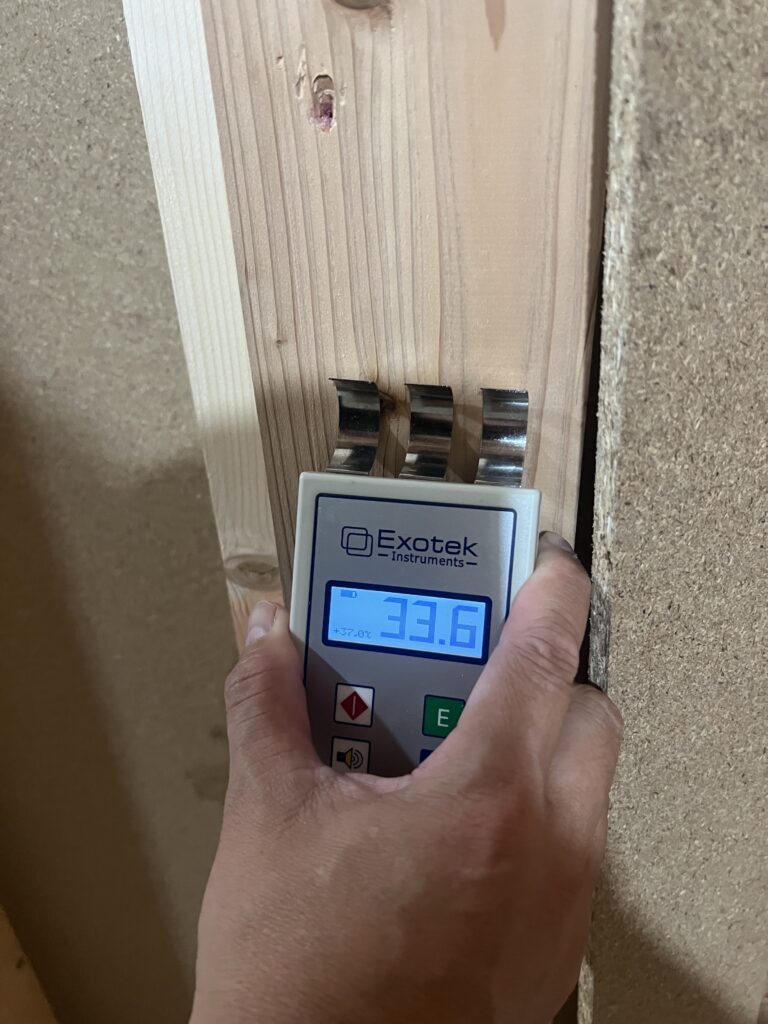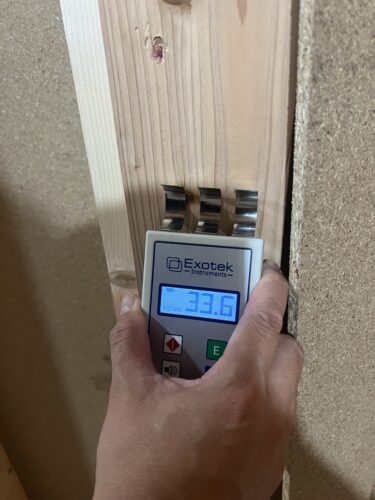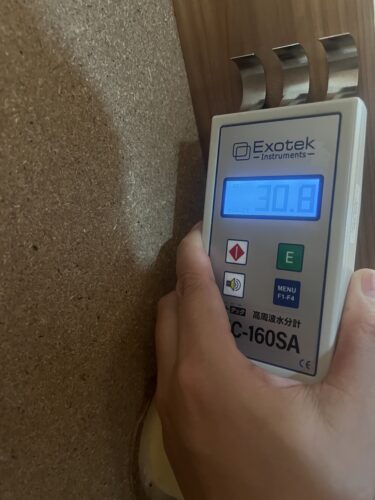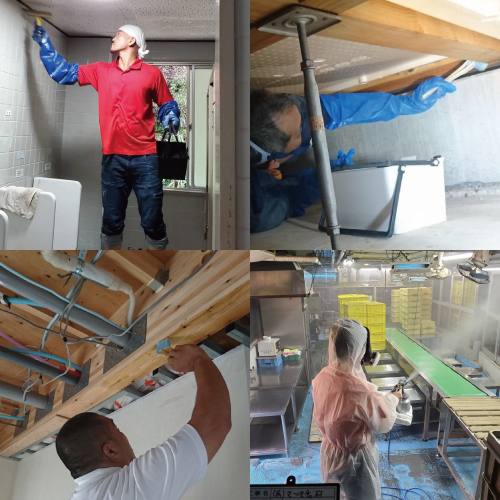Issue raised In luxury homes and villas, mold is likely to grow due to moisture and interior materials, despite their beautiful appearance, and this has serious impacts on asset value and health. What you will learn by reading this article This article carefully explains the causes of mold growth in luxury properties, its impact on asset value, and the health risks, and provides step-by-step instructions on how to do it yourself or leave it to the professionals. Benefits of reading this article By learning specific preventive measures and an estimate of maintenance costs, you can take safe measures to maintain future asset value and protect your family’s health.
1. Causes of Mold in Luxury Homes
Luxury homes often feature high-quality materials and state-of-the-art systems. However, these same structures can unintentionally promote mold growth. The very design elements that enhance comfort can create hidden moisture risks. If overlooked, mold can spread quietly and undermine both health and property value.
1-1. Airtight Construction and Poor Ventilation
Luxury residences typically aim for maximum energy efficiency with highly airtight construction. While this minimizes heating and cooling costs, it also traps indoor moisture generated from daily activities—cooking, bathing, laundry, even breathing. Without adequate ventilation, water vapor accumulates, causing condensation and creating prime conditions for mold, especially around windows, closets, and behind furniture. Even centralized HVAC systems may fail to remove humidity effectively if not properly ventilated.
1-2. Natural Interior Materials as Nutrient Sources
High-end finishes often include natural materials such as solid wood, diatomaceous earth plaster, and lime plaster. Although these materials regulate humidity, they can also serve as food for mold, particularly when damp. Wood contains cellulose that mold thrives on, potentially allowing deep penetration into beams and flooring. Once it reaches interior layers, mold becomes difficult to eliminate entirely. Similarly, breathable wall finishes can retain moisture for extended periods, encouraging mold proliferation despite their elegant appearance.
2. How Mold Devalues Your Property
Mold in a luxury home is far more than an aesthetic issue—it can significantly depreciate your investment. Even a single mold patch observed during an open house can deter buyers or tenants, harming both reputation and resale price.
2-1. Material Deterioration and Repair Costs
Mold gradually breaks down organic building materials, particularly wood. To fully remediate deeply infected wood, extensive repair or replacement may be required. Mold-infested insulation or drywall often needs wall reconstruction, further escalating costs and requiring temporary relocation during repairs. Such damage diminishes your home’s quality and contributes negatively to its appraisal.
2-2. Lower Market Value During Sale or Lease
A beautiful, well-located home will lose appeal if visitors smell mustiness or notice mold. Discoloration, even subtle, raises suspicions of deeper issues. In the luxury market, buyers expect pristine living environments—and any hint of mold may prompt them to withdraw or negotiate a much lower price. Real estate agents are also required to disclose mold risks, which further pressures sellers to reduce listing prices.
3. Mold Worries in Luxury Condominiums
While upscale apartments provide premium amenities, their sealed structures can trap humidity and mask mold issues, damaging both comfort and property value.
3-1. Airtight Design and Odor Problems
Luxury condos are designed to isolate noise and control energy use through airtight seals. Unfortunately, that same airtightness can trap humidity in bathrooms, kitchens, and closets—areas prone to condensation. The result: mold growth and lingering odors. Even unseen mold on walls or ceilings can quickly deteriorate indoor air quality and visitors’ impressions.
3-2. High-Rise Ventilation Limitations
High-rise condos rely heavily on mechanical ventilation. If systems are clogged or malfunctioning, humidity accumulates. Despite tall altitude, airflow may be poor, and moist air stagnates. Inspections, fan cleaning, and dehumidifier use are essential in these settings to maintain air circulation and prevent mold buildup.
4. Mold Management in Vacation Homes
Vacant homes such as vacation properties face unique mold risks, often unseen until it’s too late. Without regular inspection or ventilation, moisture and dust build-up can accelerate mold damage.
4-1. Empty-Home Humidity and Dust Accumulation
Unoccupied homes frequently suffer from stale air and high humidity. Located near lakes or mountains, these properties are particularly vulnerable. Dust that settles becomes a breeding ground for mold spores—combining moisture, dust, and dark corners is a recipe for rapid mold expansion, compromising structural elements and furnishings.
4-2. Preventive Treatment and Scheduled Maintenance
Professional preventive treatment using fogging techniques, such as MIST Method®, penetrates deep into porous surfaces without abrasive cleaning. Scheduling regular inspections—at least once or twice annually—ensures timely detection and treatment. Integrating humidity sensors or remote monitoring adds another layer of protection for absentee owners.
5. Health Risks Posed by Mold
Mold isn’t just an eyesore—it often harbors invisible dangers to human health. Luxury residences frequently house families with vulnerable members, making mold prevention vital.
5-1. Allergies and Respiratory Inflammation
Mold spores dispersed through indoor air can provoke allergic reactions like sneezing, itchy eyes, and runny nose. For immunocompromised individuals, these spores can intensify asthma or bronchitis. HVAC units and ventilation ducts may exacerbate the issue by spreading spores. Minimizing exposure by maintaining clean and dry conditions is essential.
5-2. Mycotoxin Exposure and Neurological Effects
Some molds produce mycotoxins—compounds harmful beyond allergy triggers. These toxins may cause chronic symptoms: fatigue, dizziness, headaches, cognitive difficulties—even neurological disorders in severe cases. Long-term exposure from unseen mold colonies can be misdiagnosed. If your household—or guests—experience such unexplained symptoms, investigate hidden mold sources promptly.
6. Practical Mold Inspection Methods for Luxury Homes
Mold in high-end properties can be deceptively hidden. Identifying early signs with precision methods is key to preserving health and structural quality.
6-1. Self-Inspection of Overlooked Areas
Start by checking high-risk zones with poor airflow and steady humidity:
-
Interior walls of closets
-
Behind furniture in bedrooms and living areas
-
Window seals and rubber gaskets
-
Bathroom ceilings and exhaust vents
-
Under sinks and behind appliances
Look for minor discoloration, peeling wallpaper, or musty odors—indicators of concealed mold.
6-2. Air Quality Testing and Equipment
Professional air sampling and surface swab tests can detect even invisible mold. Using indoor air quality monitors with humidity, VOC, and mold marker readings adds early warning capability. These tools help catch potential issues before they escalate into visible damage.
7. Hiring Professionals for Mold Removal and Prevention
Professional intervention ensures thorough removal and long-lasting protection—crucial in luxury homes where preservation of materials is vital.
7-1. Comparing Removal Techniques
The MIST Method® (used by mold busters like Kabibusters Osaka and Kabi Reform Tokyo/Nagoya) uses a mist of bespoke biodegradable agents to dissolve mold without scrubbing. This preserves wood, plaster, and other sensitive finishes. Harsh bleach-based cleaning may hide symptoms temporarily but often leads to recurrence.
7-2. Choosing a Reliable Provider and Understanding Estimates
Vet providers for method transparency, safety credentials, and follow-up care. Look for clear documentation covering treatment steps, materials used, and coverage area. Transparent estimates help prevent hidden fees or insufficient treatment.
8. Everyday Mold Prevention Habits
Simple daily routines can dramatically reduce mold risk and upkeep costs in high-end homes.
8-1. Ventilation and Dehumidification
Open windows daily—especially on clear mornings—to reduce condensation. Use dehumidifiers to maintain indoor humidity between 40% and 60%. Monitor levels using hygrometers, and focus attention on bathrooms and bedrooms.
8-2. Regular Cleaning and Targeted Treatments
Dust collection fosters mold growth. Wipe down in fussy areas like under furniture and in closets once a month. Select location-appropriate mold inhibitors—spray in wet areas like baths, gel packets in wardrobes. Combined with professional prevention, these habits extend treatment efficacy.
9. Costs Specific to Mold Treatment in Upscale Properties
Mold treatment costs diverge sharply depending on materials, structure, and scope.
9-1. Cost Differences by Material
Natural finishes—wood, lime plaster, clay—require customized, non-abrasive treatments. Such methods often cost 1.5 to 2 times more than standard bleach wash. Extensive damage requiring demolition and rebuilding can range from tens to hundreds of thousands in repair costs.
9-2. Upfront Mitigation vs. Continued Maintenance
Early preventive care, such as scheduled MIST Method® treatment, typically costs a few thousand to tens of thousands of yen. It remains far cheaper over time compared to large-scale structural repairs. Maintenance plans with annual inspections yield predictable budgeting and minimal disruption.
10. Asset Preservation: Mold Prevention as Future-Ready Value
Luxury homes are long-term investments. Effective mold control not only improves comfort but strategically safeguards resale value.
10-1. Sustaining Property Worth Through Mold Prevention
A home free from visible or olfactory signs of mold impresses buyers and renters. Documented sanitation and air quality measures enhance credibility during appraisal and negotiation, increasing return on investment.
10-2. The Advantage of Ongoing Inspection Contracts
Engaging in annual or biannual maintenance contracts—covering inspections, cleaning, humidity management, and HVAC servicing—ensures homes remain in prime condition. This also makes your home more attractive to future buyers as a thoroughly cared-for asset.
Mold removal and renovation can be handled all at once | Taiko Construction Co., Ltd.
For those who are having trouble with mold problems in luxury homes and villas. We, “Mold Busters Osaka” and “Mold Removal Reform Tokyo/Nagoya”, are one of the few specialist companies that can achieve both mold removal and reform at the same time. Taiko Kenso Co., Ltd., the parent company, is a professional group that protects the value and beauty of buildings and provides wide-ranging services in the Kansai, Kanto, and Chubu areas. At Mold Busters, we use our unique “MIST Method®” to decompose and kill mold down to the root without damaging the material. Since we mix special agents according to the type of mold and the environment in which it occurs, we can safely and reliably deal with materials unique to luxury homes such as wood, diatomaceous earth, and plaster. In addition, after removal, we also apply a highly durable anti-mold treatment to provide comprehensive support to prevent recurrence. In addition, Taiko Kenso Co., Ltd. also provides construction work at the same time, making use of our many years of experience in reform. We can handle repairs to areas damaged by mold, such as wallpaper replacement, water-related equipment replacement, and flooring and ceiling repairs, as well as the renewal of the entire home in one go. General contractors often need to request a separate renovation company after mold removal, which increases the time, cost, and effort required. However, we have a one-stop system in place, and by carrying out both mold removal and renovation at the same time, we are able to provide a service that offers an excellent balance of speed, quality, and cost. If you are looking for careful and reliable construction suitable for a luxury property, please contact Mold Busters Osaka or Mold Removal Renovation Tokyo/Nagoya. We will make the best proposals to protect your health and asset value.





